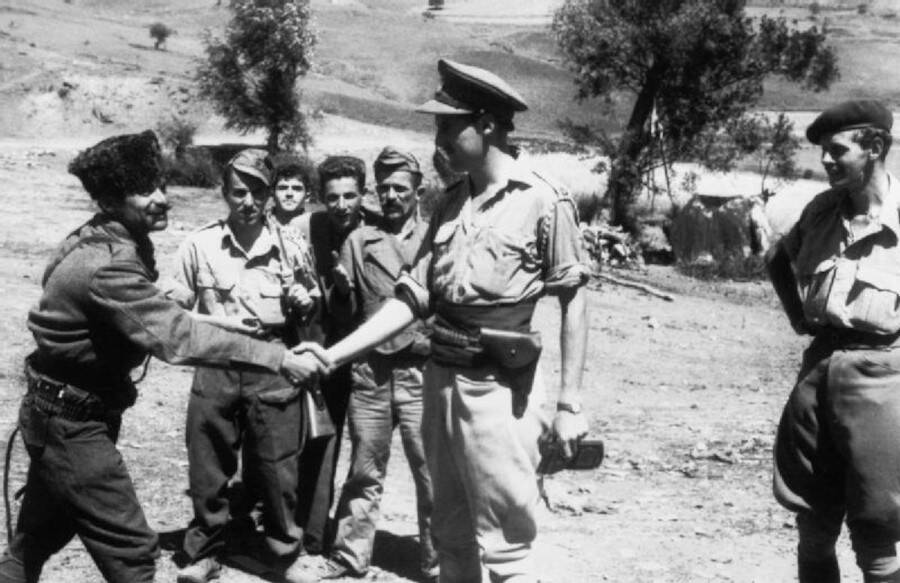Operation Gladio: The covert Italian stay-behind operation

During the Second World War, the British Special Operations Executive carried out clandestine missions to support resistance organizations, inspiring the later Operation Gladio. (Courtesy of All That’s Interesting)
SUMMARY
Let's rewind to post-World War II Europe, where Operation Gladio was crafting a real-life spy thriller. Picture this action-packed saga set against the backdrop of Cold War tension. Think secret agents huddled in dimly lit rooms, encrypted messages flying through covert channels, and hidden caches in remote locations loaded with enough arsenal to kickstart a mini-war. High-explosive munitions, machine guns, rocket launchers—Operation Gladio had it all and more.
Western leaders are freaking out about the rise of the Soviet Union. Enter the United States, NATO and the CIA, who kicked off Operation Gladio in the late 1940s. The endgame? Build secret "stay-behind" armies across Western Europe to counter Soviet invasions and nip local communist movements in the bud. Although initially conceived to combat the Soviets, the operation didn't shut down until the early '90s.
Italy was the first place where the secrets of Operation Gladio came to light. However, this covert operation was far from an Italian-only endeavor. The underground network had its reach all over Western Europe, from Belgium and France to Switzerland and Norway. Different countries had their own versions of Gladio, each with a unique code name. For example, in France, it was called "Plan Bleu," in Belgium, it was "SDRA8," and Switzerland had "P26."
Operation Gladio’s double-edged sword
Italy was no stranger to the tactics deployed by Operation Gladio's secret armies. As the line between safeguarding democracy and undermining it grew increasingly blurry, the Italian populace was in for a rough ride during the "Years of Lead" (Anni di Piombo). From the late 1960s to the early 1980s, this dark period was marked by widespread political violence, terrorism, and state-backed subterfuge.
It began on December 12, 1969, with the Piazza Fontana bombing in Milan. The explosion claimed 17 lives and left more than 80 injured. Initially, anarchist groups were blamed, but a sinister link to Gladio operatives emerged as the fog of deception lifted. In 2001, Vincenzo Vinciguerra, a far-right extremist and a Gladio operative, was convicted for the crime, shedding light on the operation's darker elements.
Then came the Bologna railway station bombing on August 2, 1980. The horror unfolded as a time bomb exploded, killing 85 people and injuring over 200. Francesco Cossiga, Italy's interior minister and later the President, openly spoke about the state's links with "parallel structures" within the Italian secret services tied to Gladio. The tragedy was a glaring reminder that the operation had spiraled far from its original aims.
Armed caches discovered in 1972 at the village of Andreotta in Calabria and 1981 in Trieste further heightened suspicions. Think massive arsenals equipped with C-4 plastic explosives, precisely the kind used in the Bologna massacre.
Breaking Gladio’s silence
The wall of secrecy surrounding Operation Gladio began to crack in 1990. The linchpin moment came in August when Italian Prime Minister Giulio Andreotti confirmed Gladio's existence before the Italian Senate after years of denials. This revelation was akin to throwing a stone into a calm pond, creating ripples that reached the parliaments and media of other European countries.
Subsequent parliamentary investigations revealed even more shocking details. The Belgian stay-behind network, for example, was connected to a series of violent acts during the Brabant killings between 1982 and 1985, which left 28 people dead. In Switzerland, revelations led to a political storm, culminating in the resignation of defense minister Kaspar Villiger. The Swiss secret army, P26, was exposed as not merely an anti-Communist force but as a group with an extremist ideology far removed from mainstream political thought.
Perhaps one of the most jarring disclosures came from General Gerardo Serravalle, who had commanded the Italian Gladio from 1971 to 1974. He testified that Gladio was involved in Italy's 1964 plan to stage a coup d'état, which was only averted at the last minute.
The expose of Operation Gladio raised questions about accountability and transparency, pulling the rug from under the feet of those who believed their governments were above secret and often undemocratic warfare. While the operation aimed to protect freedom, it underscored how easily the line can be crossed into illegal activities, damaging the fabric of the societies it purported to defend.
Unanswered questions
In August 1990, Italian Prime Minister Giulio Andreotti blew the lid off Operation Gladio. He confirmed its existence before the Italian Senate. But that revelation was just the start. A domino effect followed. Investigations popped up across Europe. Each probe exposed how deep these secret armies had dug into military and political systems.
Wondering about Operation Gladio's legacy? It's complicated. Sure, it never had to face off against a Soviet invasion. Some might call that a win. But the operation also twisted its way into the heart of democratic societies. It often undermined the very principles it aimed to protect. Even now, we know little about the full scope and scale of Operation Gladio. It makes us question how much we really know about covert ops carried out in the name of national security.
SHARE
